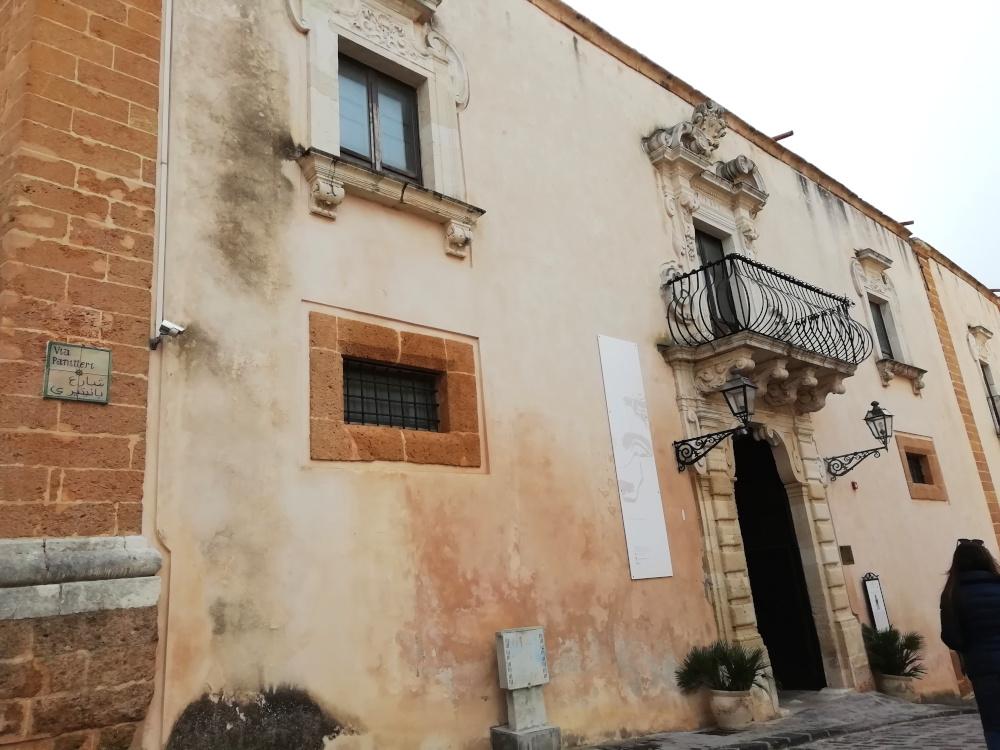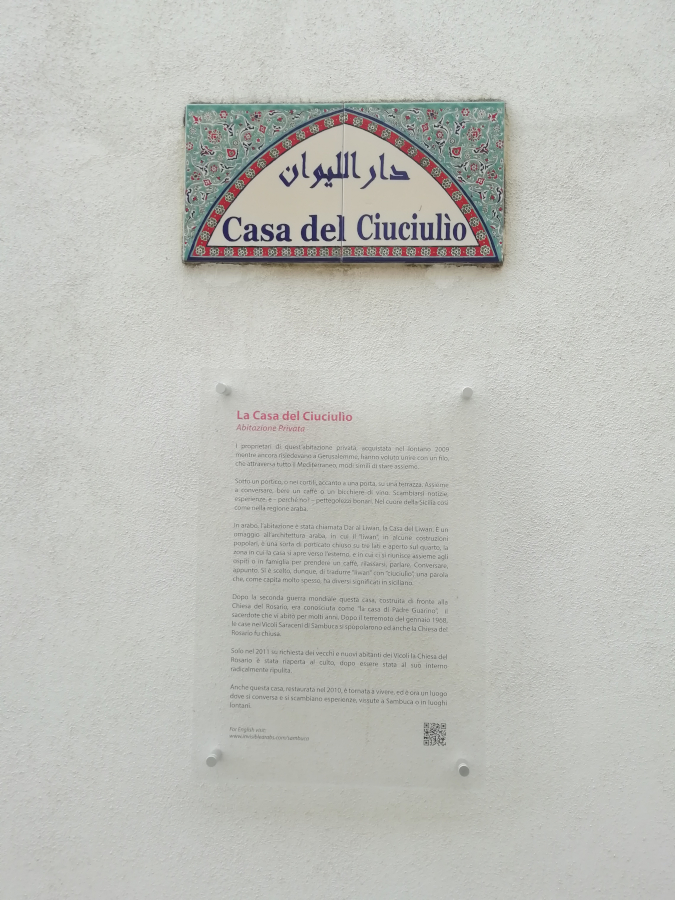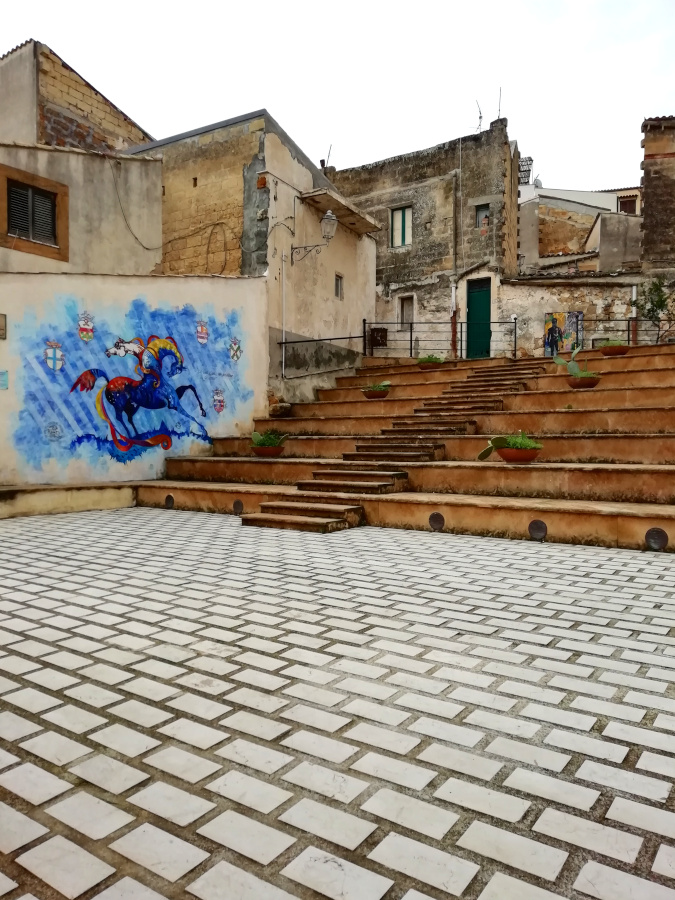[CROSSDEV] سامبوكا دي صقلية: مثال حميد للممارسات الجيدة في مجال السياحة المستدامة

The content is available in English only
Sambuca di Sicilia, a small village in the Agrigento province, heart of the vineyard’s Sicilian countryside, has always been a living community both culturally and socially.
The presence of a functioning theater, a local newspaper, an archaeological museum, a museum of sacred art, a picture gallery, state-of-the-art social services for children, the elderly and the disabled, shows a community attentive to a harmonious local development.
In fact, the development of a community passes through a "policy" of initiatives capable of reforming in order to change in the direction of new objectives that are the harbingers of social vitality.
A resilient community!
Resilience indicates the ability to proactively deal with events, when we face problems such as unemployment and depopulation and, translated on a social level, it becomes the ability of a community to adapt and grow towards new destinations for sustainable local development.
The "resilient" community is the one that implements all conditions for recovery of a new local development, from an economic and social point of view, the one that manages to free new and unexpected possibilities of existence and is able to initiate actions in order to "imagine" a new social and economic course.
To foster resilience in a community, it is necessary to enhance its civic participation, social cohesion and cultural life, in such a way that these cardinal points are a force in fighting the difficulties of adaptation to different situations.
Therefore, in order to form a true resilient community, they need a sense of belonging and shared values that strengthen the identity of the population, through individual and group competence in addressing the problems that beset them.
Resilience is now a necessary component to produce significant economic and social improvement, opportunities for sustainable development, understood as "what meets the needs of current generations without compromising the ability of future generations to satisfy their own".


The dispersed hotel model
Sambuca di Sicilia has been pursuing sustainable development for some time, also by means of official acts of the City Council which has adopted, with proper resolution, a model of economic and tourist development through the "dispersed hotel" typology.
A model that inserts accommodation facilities within the inhabited center with original hospitality, compatible with sustainable growth, to offer experiential and inspirational tourism.
A virtuous model that does not create an environmental impact because it does not require new constructions, but only recovery/renovation of what is already existing.
In addition, the model acts as a "social garrison" and animates the inhabited area by stimulating initiatives and a lifestyle, which allow "to see" a new possibility of economic and social development of the Sambucese community.
An example of success in the government of the territory
"Not even mushrooms are born by chance" the novelist Giuseppe Tomasi di Lampedusa, a profound connoisseur of the human nature, used to say.
It is no coincidence that Sambuca, an industrious community, open to culture and social life has been recognised as "the most beautiful village in Italy 2016". It was also chosen throughout Italy for the initiative "Three new artist houses" by Airbnb, the "travel community" that offers millions of accommodations for rent in every corner of the world and unique travel experiences.
In fact, Airbnb, with the "Three new artist houses" project, intended to stimulate and inspire the design with redevelopment proposals that involved major design brands, well-known architecture studios and internationally renowned artists.
A beautiful example to follow not only for the restoration, but also as a real attraction and an important media exposure with induced advertising.
The Airbnb project saw the creation of an accommodation within Palazzo Panitteri - home of the Archaeological Museum, head quarter of the Cultural Route of the Council of Europe Iter Vitis, and implementation site of CROSSDEV - and aimed to enhance the cultural stratification of the historic building with a site-specific installation.


Houses for 1 euro
And finally, the initiative of the announcement of the municipal administration "Houses for 1 euro" for a "policy" aimed at the urban regeneration of the Sambucese community.
The idea of selling some of the ancient houses in the old city center, abandoned from the emigrating-abroad original owners and acquired overtime by the Municipality, at the symbolic price of 1 euro with the contractual commitment to provide for the restoration according to the original architectural criteria and to maintain their decor in future years.
"Retrieve the building heritage, encourage tourism and prevent depopulation": this was the leitmotif of the initiative that had an international echo on the media and the social media and was followed by over 100,000 (one hundred thousand) emails requesting information, especially from abroad. TV channels such as CNN, Discovery Channel and other international networks, in addition to all Italian TV networks, reported about the initiative.
All houses for 1 euro were sold and many others sold too, as a consequence of the initiative itself.
Sambuca di Sicilia, a case history?
Yes it is.
Yes because Sambuca is a success story linked to the 1-euro housing initiative, an original way to bring true and lasting development to a community.
Yes because this initiative is an excellent marketing product and provides a solid proof of its value and effectiveness.
Sambuca di Sicilia goes in the right direction because "No wind is favorable for those who don't know where to go".
This article was written by
Ms. Emanuela Panke, Tourism Expert of CISP - Comitato Internazionale per lo Sviluppo dei Popoli
and
Mr. Gori Sparacino, Director of Iter Vitis Italia
Keep in touch with CROSSDEV: follow us on Twitter and Instagram!
#GoCROSSDEV







